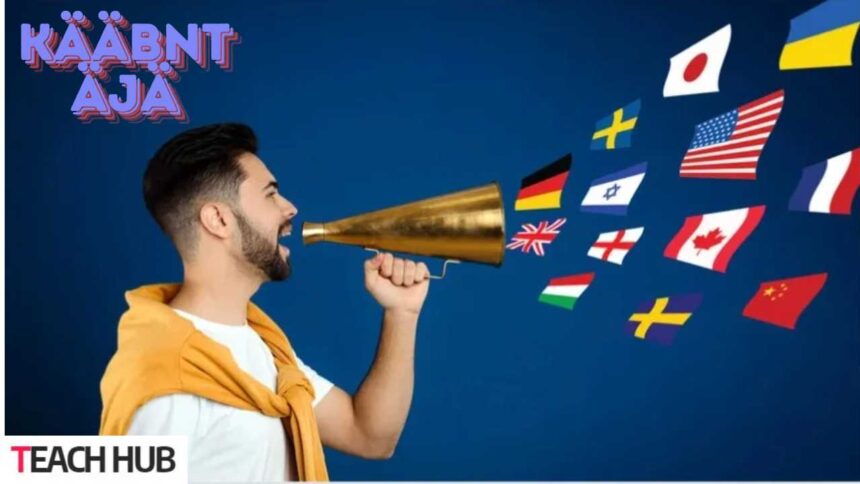Effective multilingual communication is more critical than ever in our increasingly globalized society. Enter Kääbntäjä, a Finnish term for “translator” that has come to represent cutting-edge technology and human expertise bridging linguistic divides.
In this article, we’ll explore the multifaceted world of Kääbntäjä, its importance in our global society, and how it’s shaping the future of cross-cultural communication.
Understanding Kääbntäjä: More Than Just Translation
Kääbntäjä goes beyond the simple act of converting words from one language to another. It includes an intricate process that entails comprehending the original text’s intended meaning, context, and cultural quirks. Fundamentally, the goal of Kääbntäjä is to enable meaningful language exchanges between speakers of various languages.
The role of Kääbntäjä has evolved significantly in recent years, driven by technological advancements and the growing demand for instant, accurate translations. From professional human translators to sophisticated AI-powered translation tools, Kääbntäjä represents a spectrum of solutions designed to overcome language barriers.
The Importance of Kääbntäjä in the Digital Landscape
Kääbntäjä is essential to many facets of our lives in today’s digitally first world. Its importance extends beyond personal communication, impacting businesses, education, and global politics.
For businesses expanding into international markets, Kääbntäjä is essential for localizing content, translating marketing materials, and facilitating cross-border communications. Education enables students to access knowledge and resources worldwide, breaking down linguistic barriers to learning.
Moreover, in our increasingly globalized society, Kääbntäjä fosters understanding between cultures, promotes inclusivity, and helps create a more connected world. It allows people to exchange ideas, work together on projects, and forge relationships across language barriers.
The Power of Advanced Translation Technology
Advanced translation technology lies at the heart of modern Kääbntäjä. These cutting-edge tools leverage artificial intelligence and machine learning to provide faster, more accurate translations than ever before.
Neural machine translation (NMT) represents the latest breakthrough in this field. In contrast to statistical machine translation, neural machine translation (NMT) leverages artificial neural networks to learn and enhance its translations continuously. This results in more natural-sounding, contextually appropriate translations that can capture nuances and idiomatic expressions with increasing accuracy.
However, while these technologies have made significant strides, they are not infallible. Language’s complexity, with its cultural contexts and subtle nuances, still often requires human oversight to ensure the highest-quality translations.
Challenges Faced by Kääbntäjä
Despite the advancements in translation technology, Kääbntäjä still faces several challenges:
Contextual Understanding: Machines often struggle with context-dependent translations, especially idiomatic expressions or culturally specific references.
Maintaining Tone and Style: Preserving the original text’s tone, style, and emotional nuances can be challenging, particularly in creative or literary translations.
Technical and Specialized Content: Translating highly technical or specialized content requires deep subject matter expertise, which can be difficult for machines to replicate.
Evolving Language: Languages constantly evolve, with new words and expressions emerging regularly. Keeping translation systems up-to-date with these changes is an ongoing challenge.
Privacy and Security Issues: Protecting data privacy and security is essential because translating frequently entails handling sensitive information.
The Human Touch: The Irreplaceable Role of Human Translators
While technology has revolutionized the field of translation, the human element remains irreplaceable in Kääbntäjä. Human translators bring a level of understanding, creativity, and cultural sensitivity that machines have yet to replicate fully.
Professional translators possess linguistic skills, cultural knowledge, and subject matter expertise. They can navigate complex texts, understand subtle nuances, and make informed decisions about how best to convey meaning across languages. This human touch is crucial in fields like literature, legal translation, and marketing, where cultural adaptation and creative interpretation are often necessary.
Furthermore, human translators play a vital role in improving machine translation systems. They provide the high-quality training data necessary for these systems to learn and improve, and they perform post-editing tasks to refine machine-generated translations.
Kääbntäjä in Practice: Applications Across Industries
The applications of Kääbntäjä extend across numerous industries and sectors. The following are some crucial domains where translation is essential:
Business and Commerce: From translating contracts and business documents to localizing websites and marketing materials, Kääbntäjä is essential for companies operating in global markets.
Healthcare: Accurate medical translations are critical for patient care, medical research, and the global health information exchange.
Legal Sector: Legal translations require extreme precision and understanding of legal terminology across jurisdictions.
Entertainment and Media: Subtitling, dubbing, and localizing content for international audiences relies heavily on skilled translation.
Tourism and Hospitality: From travel guides to hotel websites, translation helps make travel accessible to people from diverse linguistic backgrounds.
Education and Research: Kääbntäjä facilitates the exchange of knowledge and ideas across language barriers, which is crucial for academic collaboration and learning.
The Future of Kääbntäjä: Trends and Predictions
As we look to the future, several trends are shaping the evolution of Kääbntäjä:
- AI and machine learning will continue to improve, leading to more sophisticated and accurate automated translations.
- Speech recognition and translation technology advancements will make real-time, spoken language translation more widespread and reliable.
- Future systems may be able to translate not only text and speech but also gestures, facial expressions, and other nonverbal cues.
- Translation systems may become more adaptable to individual users’ preferences and communication styles.
- Blockchain technology could be used to ensure the authenticity and security of translations, particularly for sensitive documents.
As these technologies evolve, the role of human translators is likely to shift towards more specialized and creative tasks, working in tandem with AI to deliver high-quality translations.
(FAQs)
What exactly is Kääbntäjä?
Kääbntäjä is the Finnish word for “translator.” In a broader context, it represents the process and tools used to convert text or speech from one language to another while preserving meaning and context.
Can machine translation completely replace human translators?
While machine translation has significantly advanced, it can only partially replace human translators. Human expertise is crucial for understanding context and cultural nuances and handling complex or creative translations.
What are the main challenges in translation?
The main challenges include maintaining context and meaning, translating idiomatic expressions, handling technical or specialized content, and keeping up with evolving language and cultural references.
How is AI changing the field of translation?
AI is improving the speed and accuracy of machine translations, handling larger volumes of text, and becoming better at understanding context. However, it still requires human oversight for optimal results.
What skills are essential for a career in translation?
Essential skills include fluency in at least two languages, cultural knowledge, excellent writing skills, subject matter expertise in specific fields, and familiarity with translation technologies.
Conclusion
Kääbntäjä stands at the intersection of language, culture, and technology, playing a vital role in our increasingly interconnected world. While technological advancements continue to reshape the translation landscape, the human element remains crucial.
As we progress, the synergy between human expertise and AI-powered tools promises to break down language barriers more effectively than ever, fostering global understanding and collaboration.



